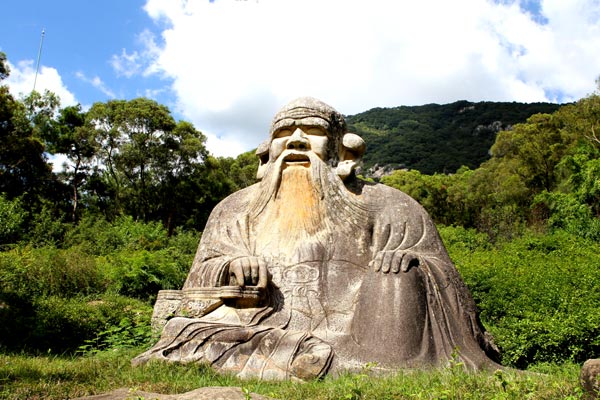 |
|
One of the country's largest statues of sage Lao Tzu sits at the Qingyuan Mountain. Chen Yingjie/For China Daily
|
The mosque is only a short drive away from the Kaiyuan Temple, the province's largest Buddhist temple.
The temple became the city's iconic landmark thanks to its two five-story pagodas that have survived earthquakes and harsh weather. Both built in the 13th century, the twin pagodas feature lifelike cameos related to Buddhist mythology.
At the base of each pagoda, there are eight sculptures of bare-chested midgets, each demonstrating amazing craftsmanship. All sculptures are rather small, but they are varied in their expressions and gestures. While a midget bares his teeth in agony, another seems to hold his breath and exert all his strength.
Each story of the pagoda highlights sculptures of guardians, such as gods and Buddhist warriors.
Despite the overall similarity between the two pagodas, the sculpture of a monkey dressed like a monk, which is only found on the western pagoda, is a striking contrast.
Tradition has it that the monkey image on the fourth story of the western pagoda inspired Wu Cheng'en to create the Monkey King, the protagonist of his 16th-century epic fantasy novel Journey to the West.
That may or may not be true, but what we do know is that the TV series adapted from the literary classic shot one episode in this temple.
Kaiyuan Temple is situated in Xi Jie (West Street) and is close to Dong Jie (East Street); both are home to well-preserved distinctive arcade-buildings, and are perfect for leisurely exploration.
The two old streets offer a variety of tasty street foods, and last year A Bite of China, the popular show about Chinese cuisine, filmed in this area.
